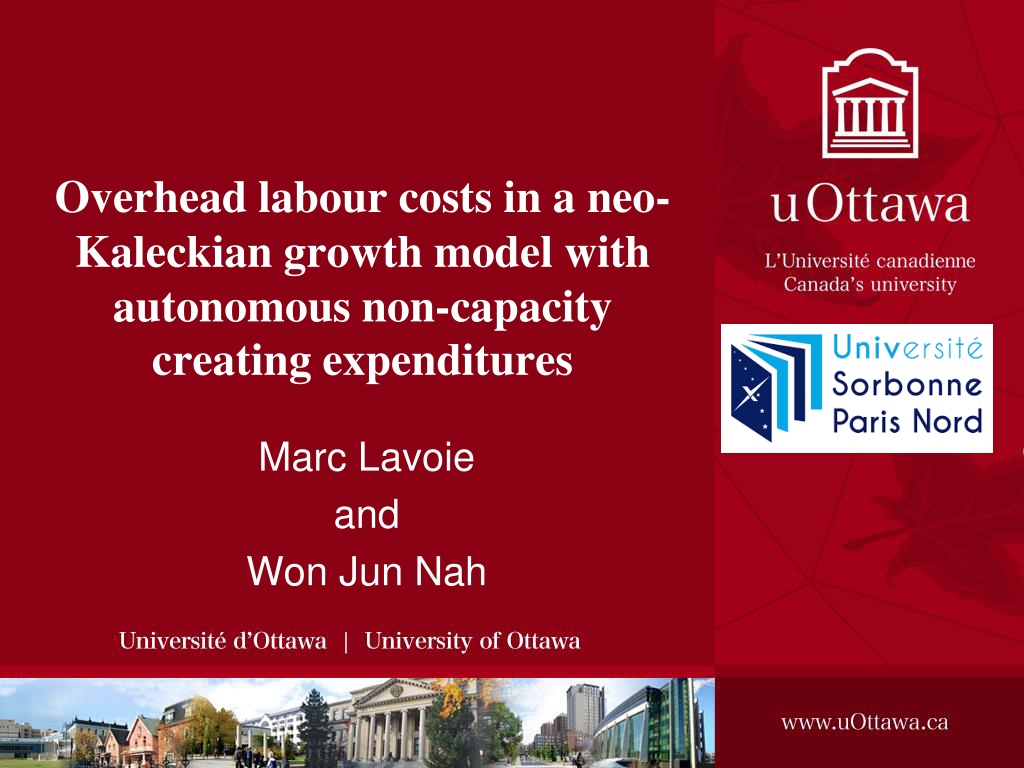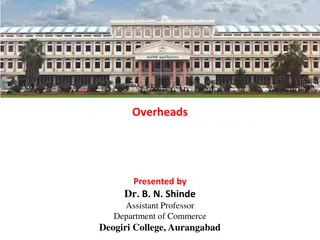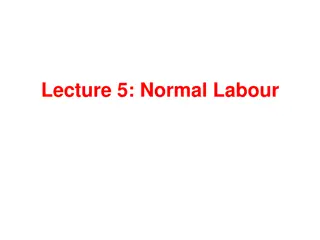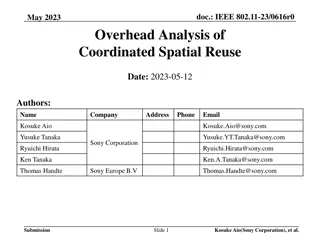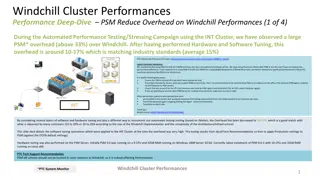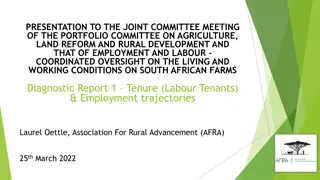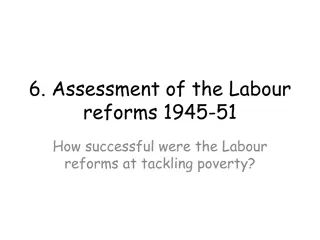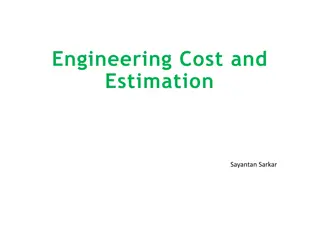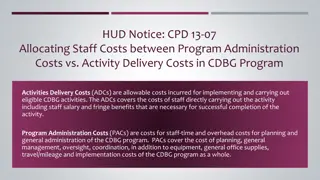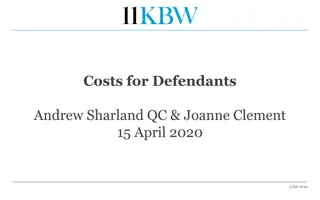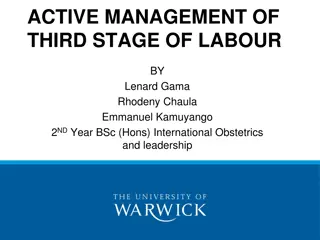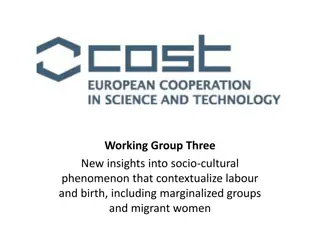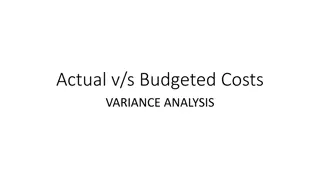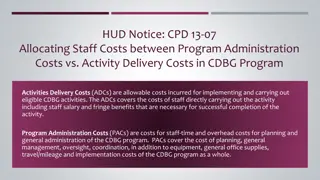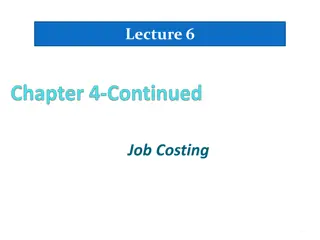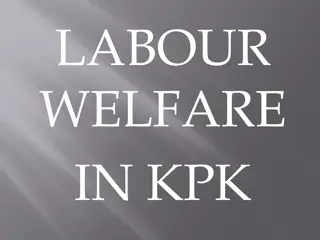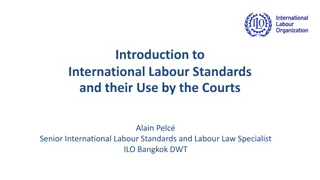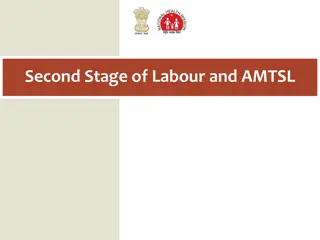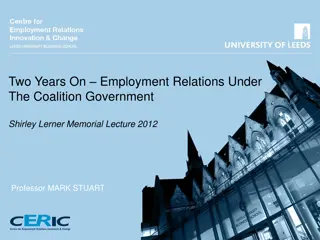Understanding Overhead Labour Costs in Neo-Kaleckian Growth Models
Overhead labour costs play a crucial role in income distribution and determining whether economies operate in a profit-led or wage-led demand regime. This article explores the relationship between overhead labour, non-supervisory workers, and managers in the context of economic models proposed by researchers such as Marc Lavoie, Won Jun Nah, Kalecki, and Steindl. The widening wage gap between different categories of workers and the impact of overhead costs on profit margins are discussed, shedding light on the dynamics of income distribution and economic growth.
Download Presentation

Please find below an Image/Link to download the presentation.
The content on the website is provided AS IS for your information and personal use only. It may not be sold, licensed, or shared on other websites without obtaining consent from the author. Download presentation by click this link. If you encounter any issues during the download, it is possible that the publisher has removed the file from their server.
E N D
Presentation Transcript
Overhead labour costs in a neo- Kaleckian growth model with autonomous non-capacity creating expenditures Marc Lavoie and Won Jun Nah
Why overhead costs? Since the work of Piketty (2014), the issue of income distribution within wage-earners has attracted attention, a feature that was left relatively unexplored by PK authors. One of the most notable features of income distribution over the last 40 years is the widening wage gap between overhead labour (managers, supervisory workers) and direct (non- supervisory) workers. Overhead labour happens to play an important role in assessing the empirical controversies about whether economies are in a profit-led or wage-led demand regime. The presence of overhead labour biases the results of empirical work on the subject. Click View then Header and Footer to change this footer
Link with Kalecki Kalecki (1939 [1990, 281]) has three categories: capitalists (entrepreneurs, rentiers and corporations) managers (who earn salaries) manual workers/clerks (who do not save). Kalecki (1971, 11): We assume here that aggregate production and profit per unit of output rise or fall together, which is actually the case. This results at least to some extent from the fact that a part of wages are overheads . (1971, 50): Salaries, because of their overhead character, are likely to fall less during the depression and to rise less during the boom than wages . Click View then Header and Footer to change this footer
Link with Steindl Steindl (1952, 85): Changes in the gross profit margin may be explained by changes in overhead cost per unit at given degrees of capacity utilisation. An increase in overhead cost might, for example, appear in the form of a greater payroll for salaries . Cf Kalecki (1971, 50): Other factors must be considered: the influence of changes in the level of overheads in relation to prime costs upon the degree of competition . Click View then Header and Footer to change this footer
Link with Steindl Steindl (1952, p. 46): The net profit margin can, in fact, change for two quite different reasons: either because of a change in utilisation of capacity, with an otherwise unchanged structure of costs and prices; or the net profit margin can change at a given level of utilisation of capacity. The latter type of change will take place, for example, if the gross profit margins change Click View then Header and Footer to change this footer
Non-supervisory and supervisory workers Data based on Mohun (2014)
Inequality of salaries of supervisory workers versus wages of non-supervisory workers As of 2010, while overhead workers represent less than 20% of all workers, their annual salary is over four times that of ordinary workers. Back in 1964, while overhead workers also represented less than 20% of the workforce, their annual salary was only 2.3 times that of ordinary workers.
Key features of the model Standard neo-Kaleckian model of growth and distribution, with no inventories, where supply adjusts to demand There is a distinction between direct labour (a variable cost) and overhead labour (a fixed cost) Direct labour does not save, while overhead labour saves and hence receives salaries and dividends (managers are also capitalists) Prices are set on the basis of normal-cost pricing, more precisely based on target-return pricing There is an autonomously growing consumption expenditure that does not by itself create production capacity (there is an endogenous average propensity to save despite constant marginal propensities to save out of salaries and profits)
Managers (overhead labour) vs direct labour Two strands in the literature splitting workers into managers and ordinary (direct) workers) Managers as another kind of direct labour: Dutt (2012), Tavani and Vasudevan (2014), Palley (2015, 2017), Ederer and Rehm (2020) Managers as an overhead cost: Asimakopulos (1970), Harris (1974), Rowthorn (1981), Kurz (1990), Nichols and Norton (1991), Lavoie (1992, 1995, 1996, 2009, 2014), Nikiforos (2017)
Autonomously growing, non-capacity creating, expenditure Our model builds on the general recognition that the growth model with autonomously-growing expenditures may be an appropriate way to model basic stylized facts of modern economies with access to credit (Fiebiger 2018) This new formulation is in a sense closer to empirical studies, in the sense that they assess level effects of changes in income distribution, in contrast to the standard neo-Kaleckian models which focus on a growth rate effect . Supermultiplier (Sraffian) models of Freitas and Serrano (2015), Serrano and Freitas (2017); Kaleckian models of Allain (2015, 2019), Dutt (2019), Hein (2018), Fazzari et al. (2020), Lavoie (2016), Pariboni (2016), Nah and Lavoie (2017, 2019a, 2019b)
Outline The model economy with some basic equations Pricing equations Income shares Saving and investment equations Short-run equilibrium, a change in the wage premium to managers Short-run equilibrium, a change in the target rate of return Long-run equilibrium Concluding remarks
The model economy: income shares An expansion in effective demand brings about changes in the composition of labour. Hence, the share of profits tends to increase with the rate of capacity utilization. In the presence of overhead labour, the traditional profit share will not succeed in isolating the pure effects of profitability on accumulation, in contrast to what is argued in most empirical studies (Lavoie 2017 (EJEEP), Sherman and Evans (1984), Weisskopf 1979). Empirical research based on the evolution of the profit share is likely to be biased in finding a profit-led demand regime Can the share of profits still be considered to be a good indicator of expected profitability or of the relative bargaining position of capital?
Short-run equilibrium What is short-run in this paper? The time period during which the following variables are constant: (a) productive capacity, (b) the expectation of the firms about future sales growth, (c) the autonomous consumption of managers.
Short-run equilibrium, effect of an increase in the wage premium to managers
The profit curve seen from the demand side Click View then Header and Footer to change this footer
Short-run equilibrium The short-run effects of an increase in Utilization rate Figure (-) ? 3A (1) (-) (-) 3A (2) (+) (-) 3A (3) (-) (-) 3B (1) (-) (-) 3B (2) (+) ? 3B (3)
Short-run equilibrium, effect on an increase in the target rate of return on economic activity
Short-run equilibrium, effect on an increase in the target rate of return on the profit share
A higher target rate of return leads to a higher profit share, as expected Click View then Header and Footer to change this footer
But a higher target rate of return may generate a lower profit share Click View then Header and Footer to change this footer
Long-run equilibrium, solutions Click View then Header and Footer to change this footer
Long-run equilibrium, an increase in the target rate of return
Long-run equilibrium, an increase in the wage premium of managers
Conclusion, neo-Kaleckian vs neo-Goodwinian According to Barrales-Ruiz, Mendieta-Munoz, Rada, Tavani and von Arnim (2020), the distributive cycle with profit-squeeze distribution and profit- led macroeconomic activity is robust . In conclusion, the Goodwin model, in its various incarnations and with various extensions, rightfully retains its place as the workhorse model of classical-Keynesian macroeconomics. The present model questions these conclusions. In fact, the present model is more in line with other new empirical work that question this neo-Goodwinian vision based on profits being squeezed by wages and economic activity being led by profits. Click View then Header and Footer to change this footer
Conclusion, an alternative view Michael Cauvel (2019) has pointed out that aggregative studies that find profit-led and profit-squeeze results use a restrictive specification, such that the utilization rate does not have a contemporaneous effect on the wage share . When that restriction is removed, an increase in the wage share is generally found to have a positive effect on the utilization rate The response of the wage rate to a utilization rate shock is generally small and insignificant . Recall that it is a key feature of the Kaleckian model with overhead labour costs that the rate of utilization has a contemporaneous effect on the wage and profit shares. Click View then Header and Footer to change this footer
Conclusion, an alternative view Lilian Rolim (2019) has also verified that using the standard aggregative approach yields the usual Goodwinian results. But when the wage share is split into its supervisory and non- supervisory components, as was done here, A positive shock of the workers share will lead to a decrease in the supervisors share and to an increase in capacity utilization. A positive shock on the supervisors share will lead to a decrease in both the workers share and in capacity utilization . These results are in line with the implications of our model. Empirically, there does seem to exist a profit-squeeze mechanism, but the squeeze is done through the supervisors remuneration, and not through the wages obtained by the non- supervisory workers. It is the increase in the wage-income share of managers, when the economy is doing well, that leads to an eventual fall in the rate of capacity utilization. Click View then Header and Footer to change this footer
Final Conclusion Thus the political conclusions implied earlier by the analysis can be reasserted: to raise aggregate demand, governments should pursue wage-led policies and policies that tend to reduce wage dispersion between managerial jobs and non-supervisory jobs Click View then Header and Footer to change this footer
